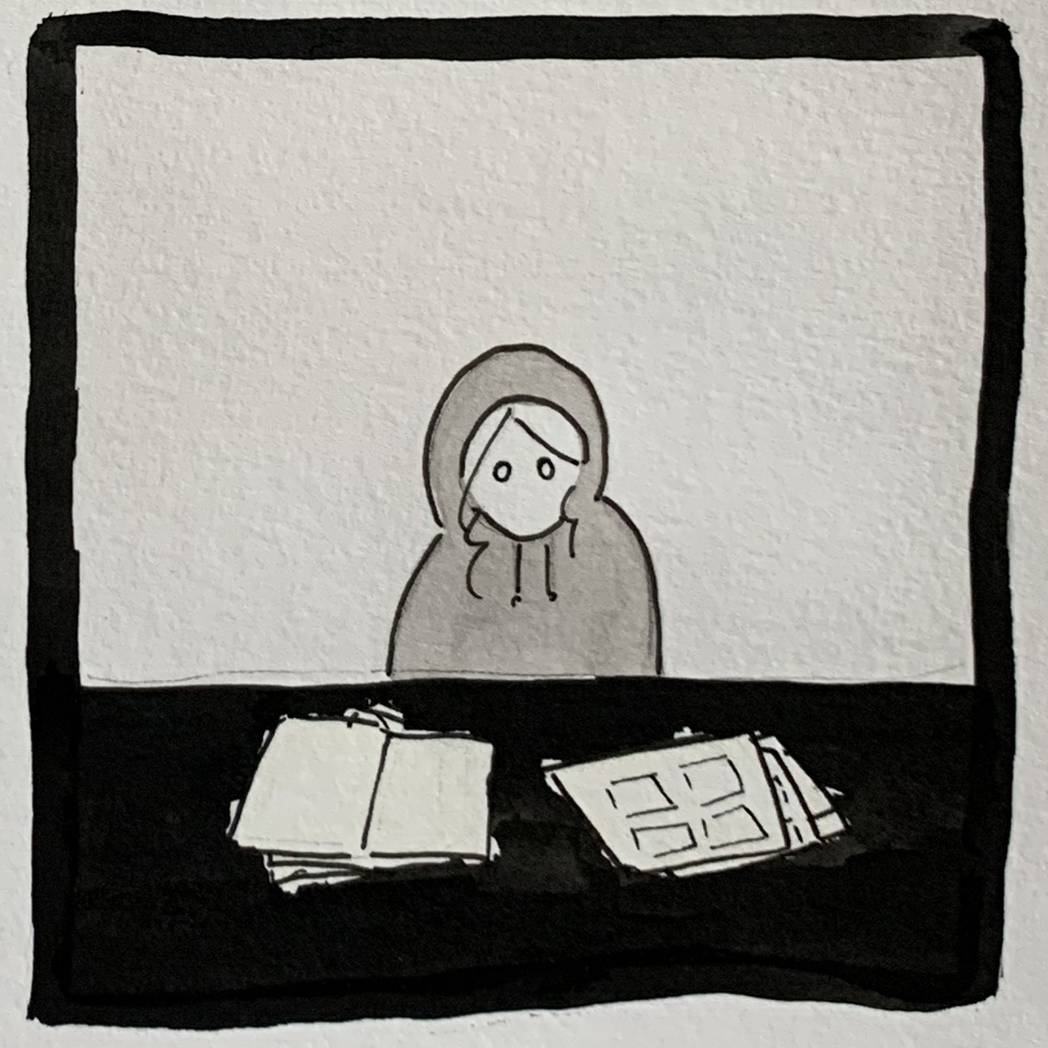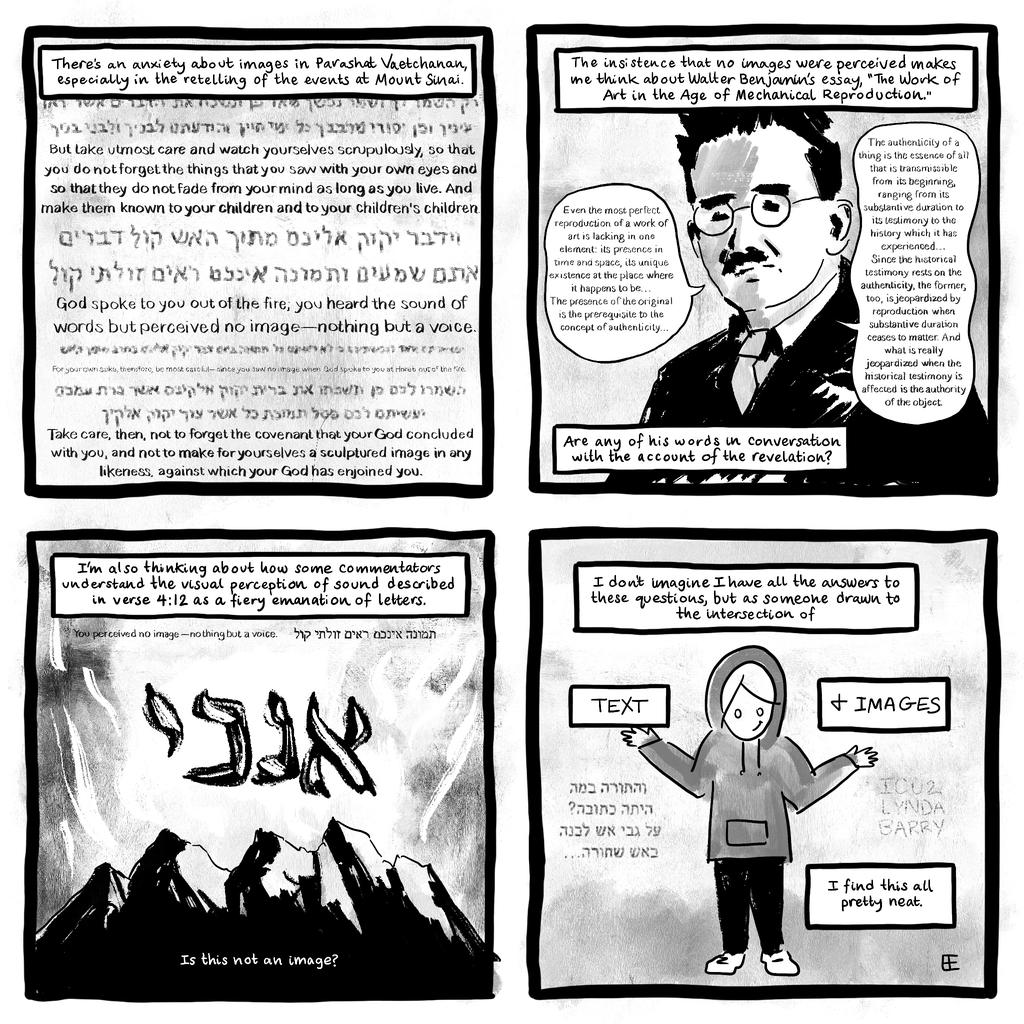
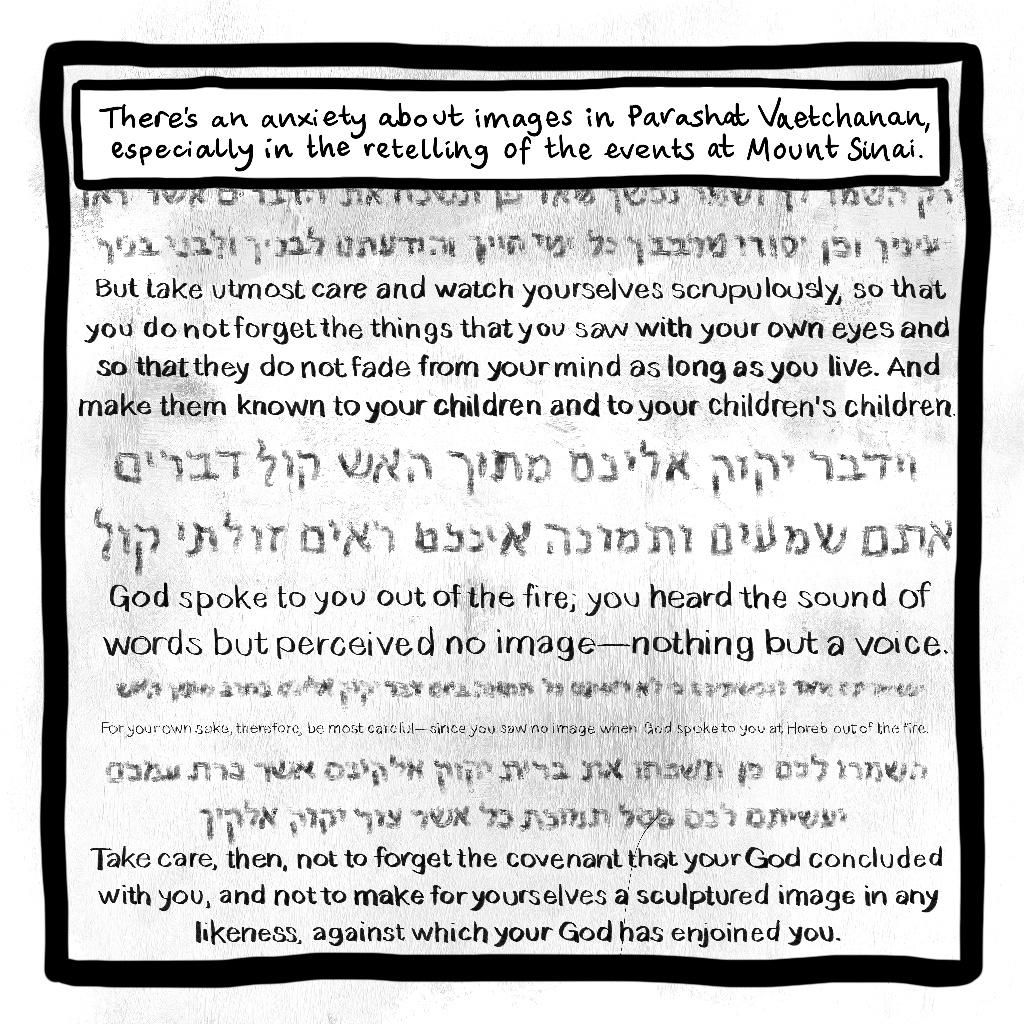
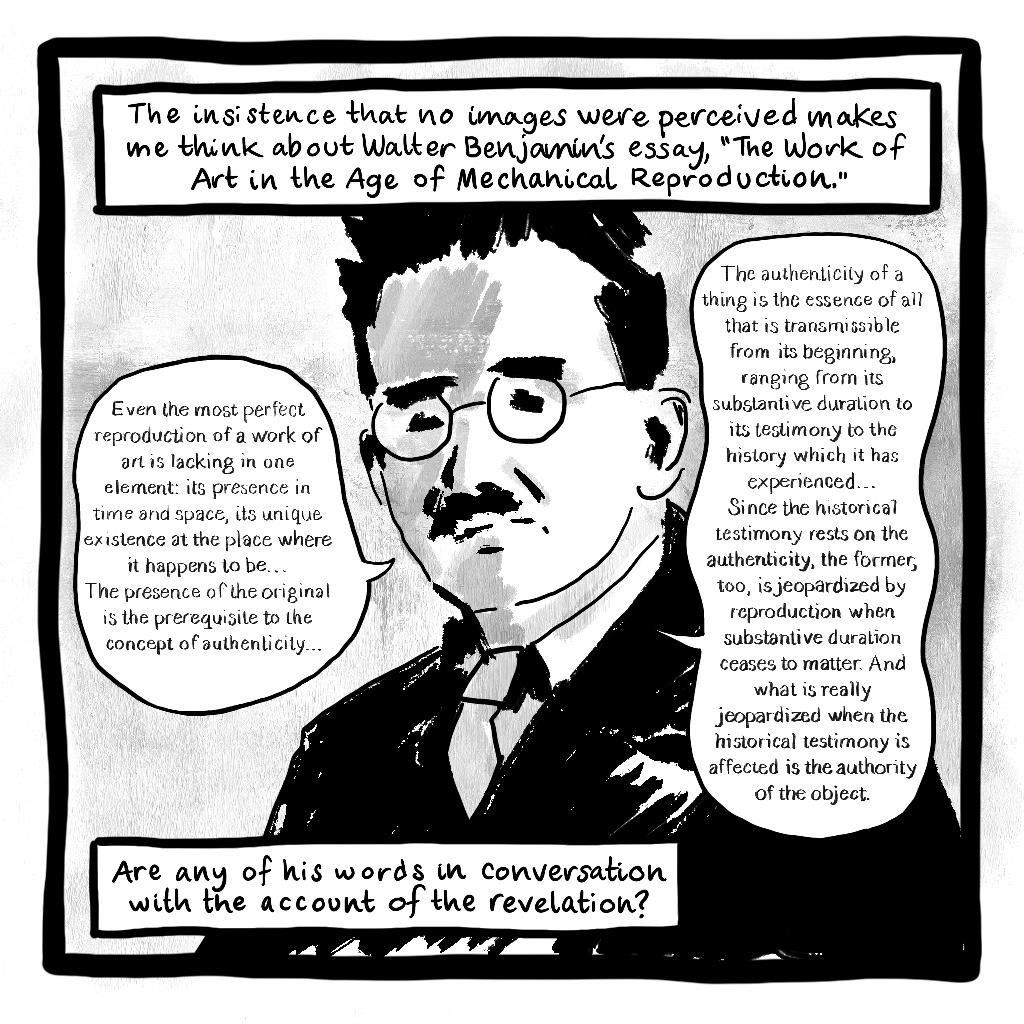
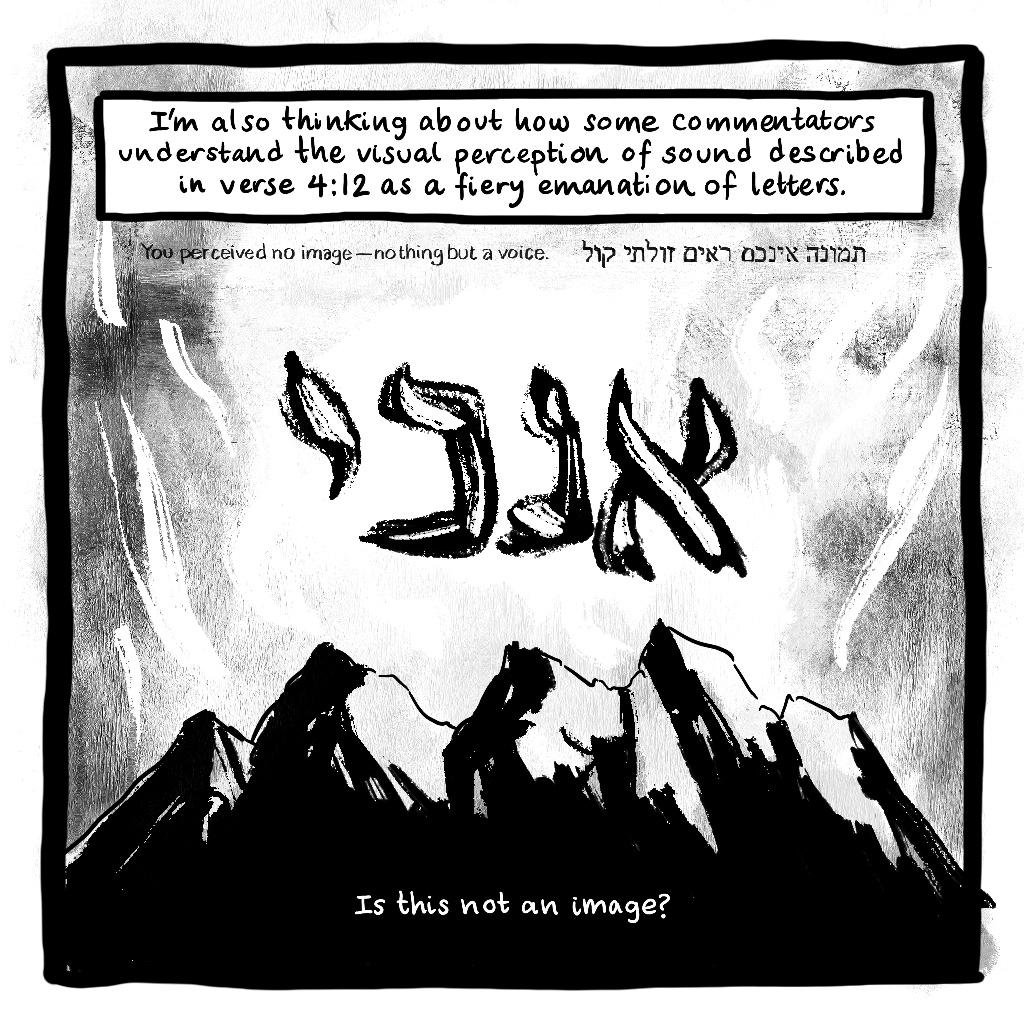
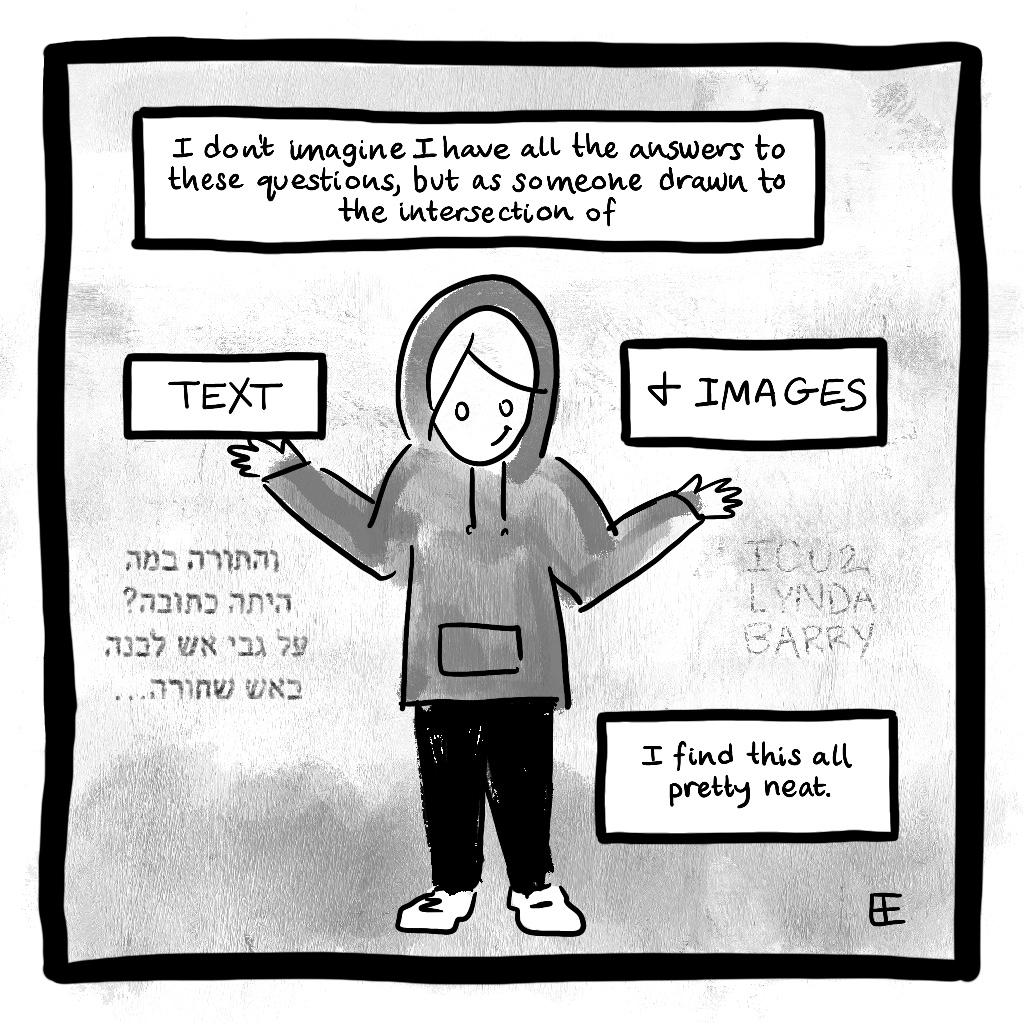
(12) יהוה spoke to you out of the fire; you heard the sound of words but perceived no shape—nothing but a voice.
Even the most perfect reproduction of a work of art is lacking in one element: its presence in time and space, its unique existence at the place where it happens to be. This unique existence of the work of art determined the history to which it was subject throughout the time of its existence...
The presence of the original is the prerequisite to the concept of authenticity...
The situations into which the product of mechanical reproduction can be brought may not touch the actual work of art, yet the quality of its presence is always depreciated. This holds not only for the art work but also, for instance, for a landscape which passes in review before the spectator in a movie. In the case of the art object, a most sensitive nucleus—namely, its authenticity—is interfered with whereas no natural object is vulnerable on that score. The authenticity of a thing is the essence of all that is transmissible from its beginning, ranging from its substantive duration to its testimony to the history which it has experienced. Since the historical testimony rests on the authenticity, the former, too, is jeopardized by reproduction when substantive duration ceases to matter. And what is really jeopardized when the historical testimony is affected is the authority of the object.
One might subsume the eliminated element in the term “aura” and go on to say: that which withers in the age of mechanical reproduction is the aura of the work of art. This is a symptomatic process whose significance points beyond the realm of art. One might generalize by saying: the technique of reproduction detaches the reproduced object from the domain of tradition. By making many reproductions it substitutes a plurality of copies for a unique existence. And in permitting the reproduction to meet the beholder or listener in his own particular situation, it reactivates the object reproduced. These two processes lead to a tremendous shattering of tradition which is the obverse of the contemporary crisis and renewal of mankind...
Solely sound. Another amazing fact was that you saw nothing but the image of the sound, meaning that the people saw pictures in the shapes of letters through the tongues of fire.
זולתי קול. שתי מלות אלה מיותרות, כי כבר אמר קול דברים אתם שומעים ותמונה אינכם רואים, ומה בא ללמדנו שאמר. זולתי קול ... כי כמו ששמעו מלת אנכי ככה ראו בעיניהם אות א' ואות נ' ואות כ' ואות יו"ד בתוך האויר צורות אותיות אלה ממש, והאותיות היו של אור גדול עומדים באויר אשר על הר סיני, ומאירים באור זך ומצוחצח עד מאד לעיני כל ישראל ... וכן כל דבור ודבור, תוך כדי דבור הנשמע לאזניהם היה נראה ג"כ לעיניהם באויר עד תום כל עשרת הדברות...
Solely sound. These two words are extra/unnecessary, as it already said, "you heard the sound of words but perceived no shape," and what does it come to teach us that it [also] says, "solely sound"? ... for just as they heard the word "I," or "Anochi," they saw with their eyes the letter aleph and the letter nun and the letter chaf and the letter yud (i.e. letters that form the word Anochi)—in the air were the shapes of these very letters. The letters were made of a great light and set in the space above Mount Sinai, shining with a pure and very bright light to the eyes of all of Israel ... and so too for each of the commandments, as the utterance was made audible to their ears, it would become visible in the air to their eyes, throughout the entirety of the ten commandments...
(Translation by EE)
...וְהַתּוֹרָה בַּמֶּה הָיְתָה כְתוּבָה? עַל גַּבֵּי אֵשׁ לְבָנָה בְּאֵשׁ שְׁחוֹרָה...
...How was the Torah written? It was written with letters of black fire on a surface of white fire..
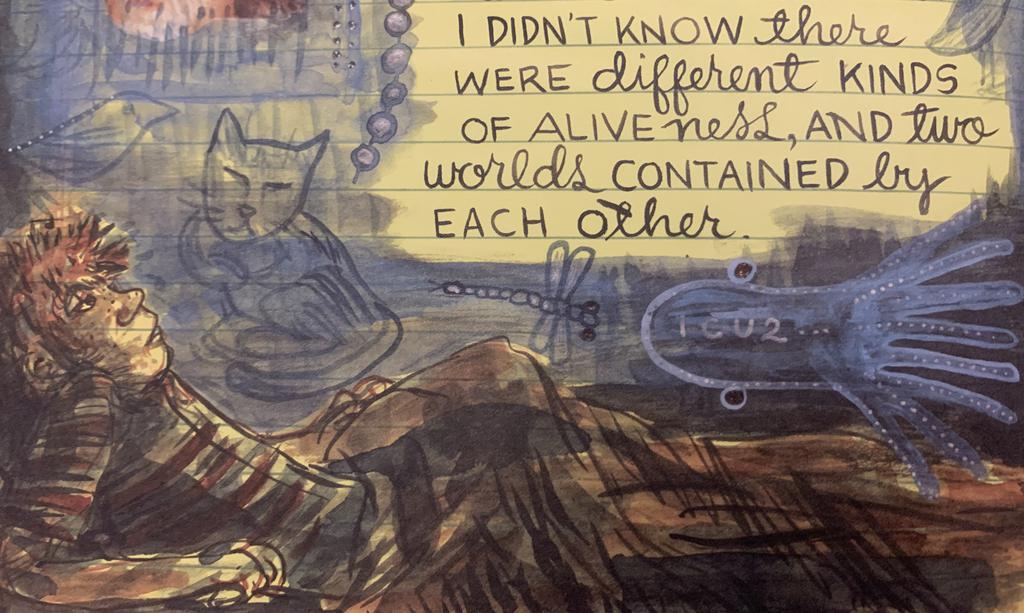
Note: "ICU2" is a recurring motif in the work of comic artist and theorist Lynda Barry.




